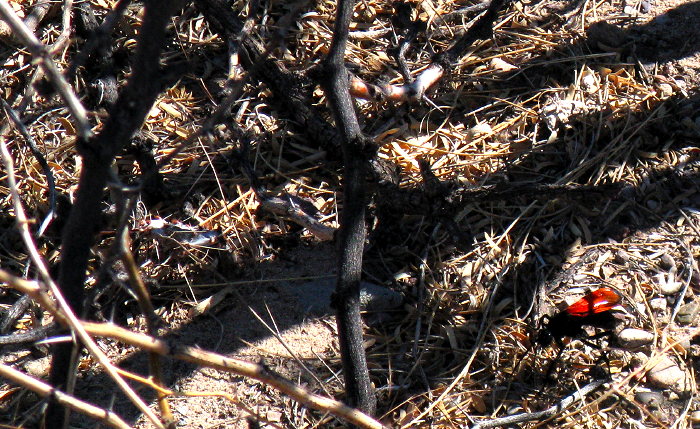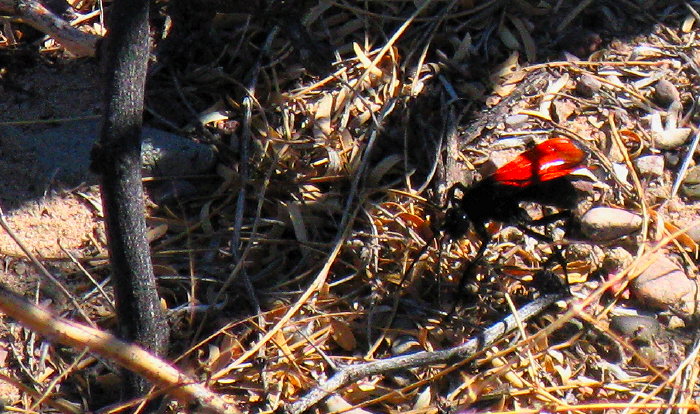Wednesday, March 25, 2009 - Percha Dam State Park, Arrey NM
< previous day | archives | next day >

Tarantula hawk, Leasburg Dam State Park, Radium Springs NM, March 24, 2009
Yesterday I had my first encounter with a tarantula hawk. Spectacular! The tarantula hawk is New Mexico's state insect.

Tarantula hawk, Leasburg Dam State Park, Radium Springs NM, March 24, 2009
The tarantula hawk
Here's what Wikipedia has to say about the tarantula hawk:
The tarantula hawk is a species of spider wasp, which hunts tarantulas as food for their larvae.
Up to two inches (50 mm) long with a blue-black body and bright rust-colored wings, tarantula hawks are among the largest of wasps. A bright rust coloring on their wings is also known as aposematic coloring and warns potential predators that they are dangerous. Their long legs end with hooked claws for grappling with their victims. The stinger of a female tarantula hawk can be up to 1/3 inch (7 mm) long, and delivers a sting which is rated amongst the most painful in the insect world.
....
These wasps have been known to attack large animals such as humans with little to no provocation, and the sting, particularly of Pepsis formosa, is among the most painful of any insect. Commenting on his own experience, one researcher described the pain as "...immediate, excruciating pain that simply shuts down one's ability to do anything, except, perhaps, scream. Mental discipline simply does not work in these situations." In terms of scale, the wasp's sting is rated at the top of the Schmidt Sting Pain Index, second only to that of the bullet ant and is described by Schmidt as "Blinding, fierce [and] shockingly electric.". Because of their extremely large stingers, very few animals are able to eat them; one of the few animals that can is the roadrunner.
Yikes! I'm sure glad this one was shy.
Night camp
Site 25- Percha Dam State Park, Arrey NM
- Verizon cell phone service - good signal
- Verizon EVDO service - good signal
- Go to the Percha Dam State Park website
- Locate Percha Dam State Park on my Night Camps map
- Check the weather in Arrey NM
How to Prepare Mice
To prepare mice, you have to first thaw them out and pull the skins off and the guts out. Then you wash them, bread them carefully, and braise them lightly in olive oil in the black skillet.